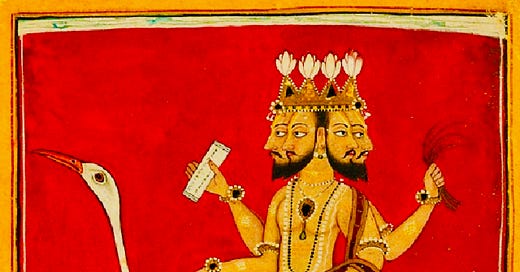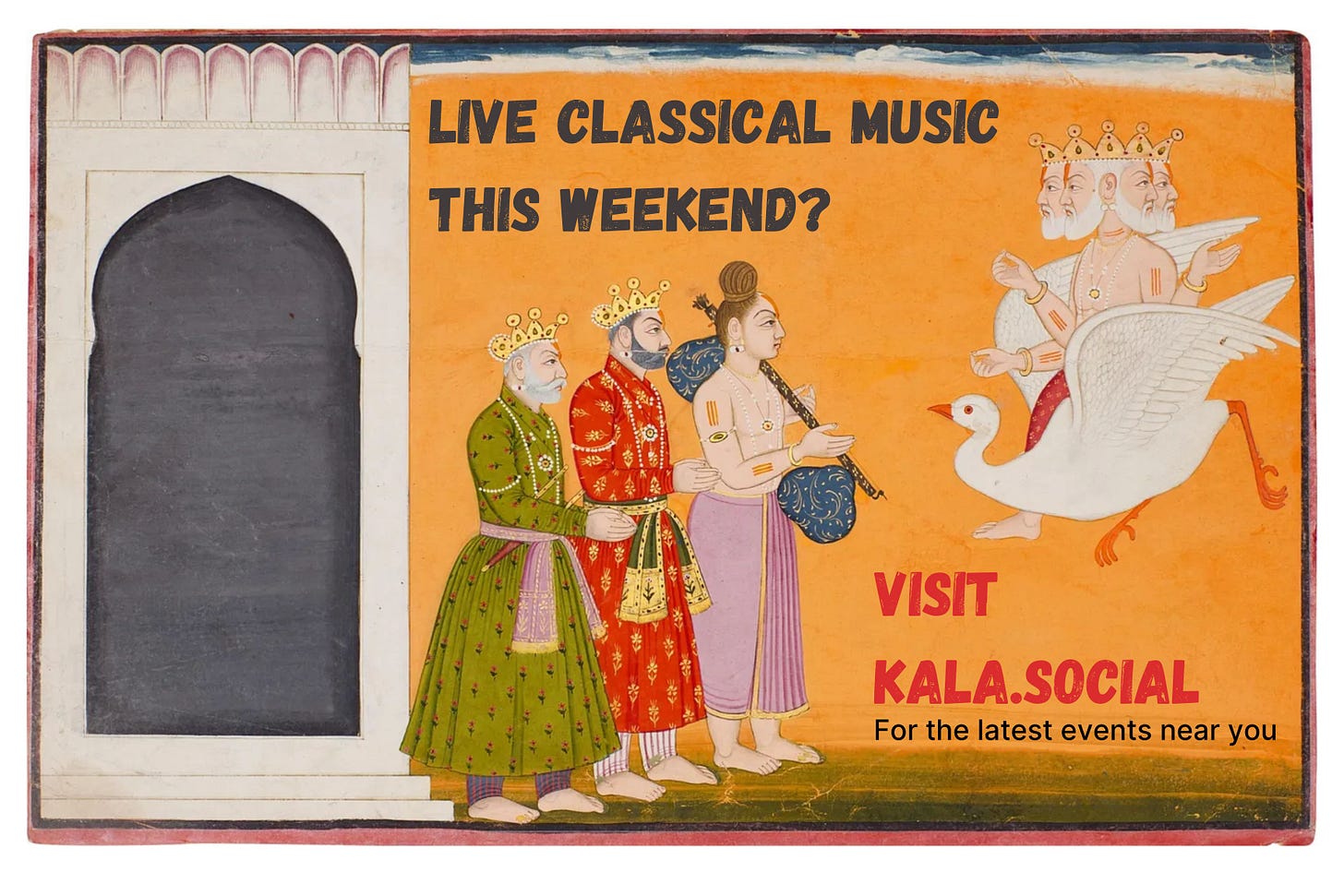Raag Hamsadhwani - from Vataapi to Hindustani classical music
Borrowed from the Carnatic school, this raag is now a mainstay in the Hindustani tradition. Its unique signature and melody make it unforgettable to the casual listener.
In India’s literary traditions, the Swan (Hamsa हंस) personifies grace, wisdom, and spiritual purity. It is the vehicle of the Goddess Saraswati and Bramha, among others. The Rig Veda mentions the swan, as do other treatises, and it can be found everywhere: in Indian art, designs, literature, mythology, and oral traditions.
Hamsadhwani means cry/call of the swan. Not to be confused with the English “swan song,” this raag is what your performers begin a concert with. It is typically an invocation to the Lord.
Some of you know I’m a hobbyist naturalist, and I was puzzled to learn that swans are not endemic to India. There are migratory Flamingos, Mute Swans, and bar-headed geese, but many contend that these are recent phenomena. I tend to think that a rare migrant might have flown in 2000 years back, much to the amazement of the local population. Swans are impressive any day, black or not. On a bright sunny day, you need sunglasses to dull the brilliance of a Swan’s white feathers.
Our ancestors naturally saw it as a messenger of something divine and pure. My last observation from the field is that the songs of real swans are about as pleasing as a small circular saw going through a lamppost. They do make a pretty sight, though.
Raag Hamsadhwani - quick introduction
Hamsadhwani is a pentatonic raag comprising all major notes. It is borrowed from the Carnatic tradition and formalized initially by Ramaswami Dikshitar.
Sa Re Ga Pa Ni Sa’
Sa’ Ni Pa Ga Re Sa
In Western music theory, if C were our tonic, this would be the notes C D E G B C, roughly the Lydian pentatonic scale. Most of the songs in this raag follow Carnatic’s devotional themes. Hindustani music also includes Shringar ras, or romantic songs.
The first song I learned from my first teacher was in this Raag, a song about Lord Ganesha. Here’s a small post about the song. It includes a recording of the song as I remember it, 35 years after I learned it.
For the classical fare, I’m compelled to start with the iconic - Vaataapi Ganapatim Bhaje. I doubt any music fans in India have not heard this tune or song. But first,
There are so many great songs in the Hindustani arena. Here are a few of my favorites. First, Kishori Amonkarji’s excellent full-course offering of a vilambit, drut, and Tarana.
Ustad Rashid Khan singing Aman Ali Khan’s famous Laagi Lagan Sakhi
Pt Ajoy Chakraborty sings his Madhyalaya bandhish and ends with his take on the iconic Vataapi.
Lots more to share here but for another post. In my next post, I’ll share a romantic bandish taught by my friend Madhurranjan Mohan on the occasion of Valentine’s day. Until then, see ya and thank you for reading.
"Yearning for the immersive experience of live classical ragas?”
Let Kala.Social guide you to nearby baithaks, concerts, and workshops where tradition thrives. Join fellow music lovers in meaningful gatherings that offer what Instagram and Facebook cannot – genuine connection through the shared language of classical music. Click ⬇️ the image.




